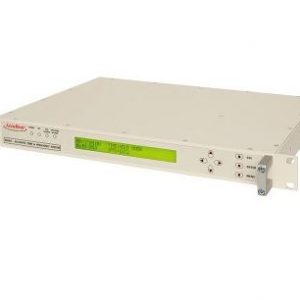Predominantly RF applications are seen as only MRI scanners in Medicine, but the use of specialist technology at frequencies above UHF is quickly growing. A number of examples of the applications are listed here.
Medical, Health
Showing all 36 results
-
Pole/Zero

MN-X-X-X-T01, 30–520MHz, 1W, Tunable Bandpass Filter Series
-
AccuBeat

AR77A – GPS-Disciplined Rubidium Clock
-
Qorvo

885136 – Band pass filter
-
Transtector

1104-15-020 – Transtector I2R IEP 240 – surge protectors
-
Transtector

1102-014-7 – Transtector (I2R SA230 40) Surge Protector
-
Senko Advanced Components Inc

DSC101 – MU Optical Connector Cleaner
-
Senko Advanced Components Inc

DSC103 – Replacement cartridge for Smart cleaner
-
Senko Advanced Components Inc

DSC104 – Replacement cartridge for Smart cleaner
-
Senko Advanced Components Inc

DSC106 – connector cleaner
-
Senko Advanced Components Inc

DSC107 – connector cleaner
-
Senko Advanced Components Inc

DSC151 – Transceiver Cleaner stick
-
Senko Advanced Components Inc

DSP123 – Senko Smart probe
-
Senko Advanced Components Inc

DSP102 – Smart Probe
-
Senko Advanced Components Inc

DSP104 – Smart Probe
-
Senko Advanced Components Inc

DSP105 – Smart Probe
-
Senko Advanced Components Inc

DSP107 – Smart Probe
-
Senko Advanced Components Inc

DSP108 Smart Probe
-
Senko Advanced Components Inc

DSC102 – FC Optical Connector Cleaner
-
Senko Advanced Components Inc

DSC105 – MU, LC Disposable Optical connector cleaner
-
Senko Advanced Components Inc

DSP103 – Senko Smart probe
-
Senko Advanced Components Inc

DSP110 – Senko Smart Probe
-
Senko Advanced Components Inc

DSP111 – Senko Smart Probe
-
Senko Advanced Components Inc

DSP114 Smart Probe Tip
-
Senko Advanced Components Inc

DSP115 – Senko Smart Probe
-
Senko Advanced Components Inc

DTO101 – Senko Smart Meter
-
Senko Advanced Components Inc

DTO102 – Senko Smart Meter
-
Senko Advanced Components Inc

DTO104 – Senko Smart Checker
-
Senko Advanced Components Inc

DTO106 – Senko Smart Source
-
Senko Advanced Components Inc

DSC108 – Senko Cassette Cleaner
-
Qorvo

RFVC4033 – Qorvo VCO
-
Salicru

SLC X-TRA – Uninterruptible power supply
-
Syfer Technology

SFSTC5000220ZC0 – Syfer feedthro
-
Voltronics Corp

JN040 – Trimmer capacitor
-
IMS Resistors

IMS1141-10DB – IMS Attenuator
-
Qorvo

TGL4201-03 – Qorvo Attenuator
-
MiniRF

MRFXF6533 – IMS Transformer
RF and Microwave for Medical Applications
Predominantly RF applications are seen as only MRI scanners in Medicine, but the use of specialist technology at frequencies above UHF is quickly growing.
A number of examples of the applications are listed here:
Vision Correction: RF energy is applied to the cornea to induce reshaping of the eye and adapt vision. The NearVisionSM CK® (Conductive Keratoplasty®) process achieves this without cutting any membrane.
Liver Cancer:Tumors can be subjected to localised heating via RF to destroy cancer cells.
MRI Scanning
At higher frequencies such as L band and X band localised application of radio frequency can be utilised for heating and cutting.
RF is used for wireless monitoring and machine to machine communication, connections to live implants for realtime monitoring and general RFID purposes.
Well known appliations are MRI. MRI scanner is a device in which the patient lies within a large, powerful magnet where the magnetic field is used to align the magnetization of some atomic nuclei in the body, and radio frequency magnetic fields are applied to systematically alter the alignment of this magnetization. This causes the nuclei to produce a rotating magnetic field detectable by the scanner—and this information is recorded to construct an image of the scanned area of the body.
Magnetic field gradients cause nuclei at different locations to precess at different speeds, which allows spatial information to be recovered using Fourier analysis of the measured signal. By using gradients in different directions, 2D images or 3D volumes can be obtained in any arbitrary orientation.
MRI provides good contrast between different soft tissues of the body, which makes it especially useful in imaging the brain, muscles, heart, and cancers compared with other medical imaging techniques such as computed tomography (CT) or X-rays.




